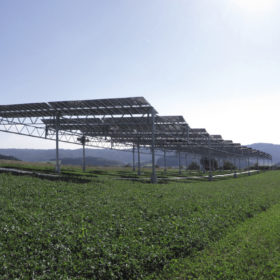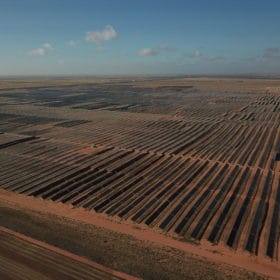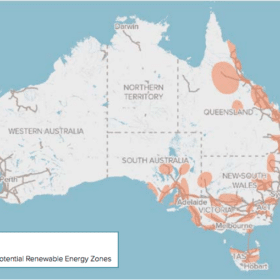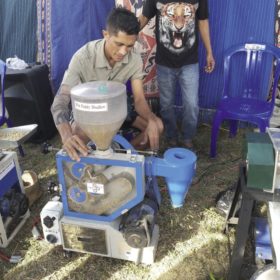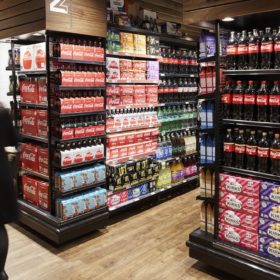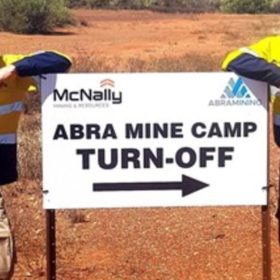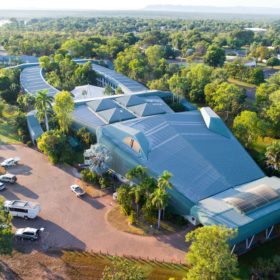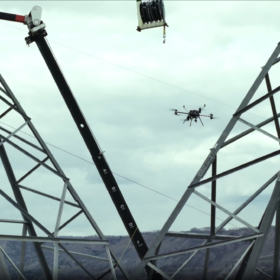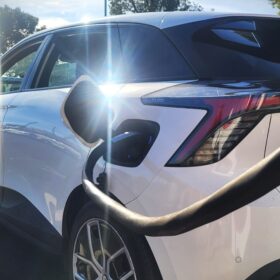The solar is over yardarm at Four Pillars gin distillery
Award-winning and globally recognised Four Pillars gin distillery, which produces its premium product in Healesville, Victoria, has utilised Sustainable Australia Fund low-interest financing to solar power its stills, save money, and take a load off the grid and the environment.
Saturday read: Solar’s flexibility can be agriculture’s gain
Both solar and the farming industry are beginning to see potential in the combined use of land for food production and energy generation. And as innovators begin to experiment with different forms, it’s becoming clear that in most cases it is solar that will have to bend to the needs of agriculture, and not the other way around, to ensure a positive outcome.
Is Australia Crawling toward electric ferries?
Last year the New South Wales Government announced plans to retire several of the iconic Manly ferries and replace them with smaller vessels. However, the recent launch of the world’s largest electric ferry in Norway has one Aussie billionaire asking whether the new Manly ferries should be electric?
Mars switches to solar to help it work, rest and play
Mars Australia has signed a massive power purchase agreement with Victoria’s largest solar farm, Total Eren’s Kiamal Solar Farm, to offset 100% of its electricity with solar power. The confectioner has six factories and two offices in Australia which used over 850 GWh of energy in 2020, energy supplied by solar from now on.
Government advisors class multiple renewable projects among Australia’s highest infrastructure priorities
Australia’s infrastructure advisory body has added a number of renewable energy-related projects to its priority list, recognising the need for investment in the “once-in-a-lifetime transition from thermal generation to intermittent renewables.”
Weekend read: Filling the energy technology, poverty gap
Advanced technology is of little use if it cannot reach those who need it most. Two Indonesian companies – Kopernik, an NGO based in Bali, and Sumba Sustainable Solutions, from the island of Sumba – are trying to bridge the gap between those in need and those with technological solutions. They both focus on the PV electrification of rural areas and brightening Indonesia’s “last mile.”
Taste the green feeling: Coca-Cola Amatil makes 100% clean energy pledge
Drinks giant Coca-Cola Amatil has announced it will power 100% of its Australian operations with renewable electricity by 2025, and be net-zero for direct emissions by 2040.
Silver renewable lining to Abra’s rich new silver mining project in WA
Hybrid energy systems are blooming in Australia’s remote locations, as renewables are increasingly partnered with gas or diesel to advance the greening of desert industries and communities that operate far from the grid.
Solar and storage to take over from uranium mine for Kakadu rejuvenation
The Ranger Uranium Mine, completely enclosed within the World Heritage-listed Kakadu National Park, ceased production in January 2021 after years of financial losses. Now, as part of a multi-million dollar rejuvenation of the Park, a solar and battery storage hybrid project is set for development at the town of Jabiru, a project which will help the town replenish itself as a tourist hub for one of Australia’s greatest treasures.
CEFC invests $75 million in decarbonising Ingenia lifestyle and holiday communities
With 7,600 residents and many more travellers recharging at its holiday properties each year, Ingenia Communities Group is set to lead the retirement and affordable-travel-accommodation sectors towards solar uptake following a major investment by the Clean Energy Finance Corporation.

